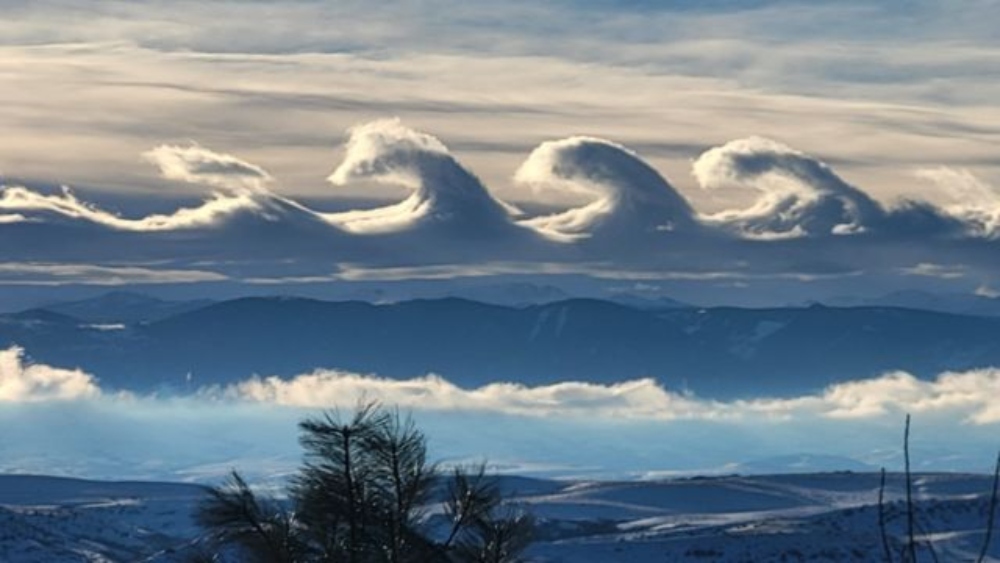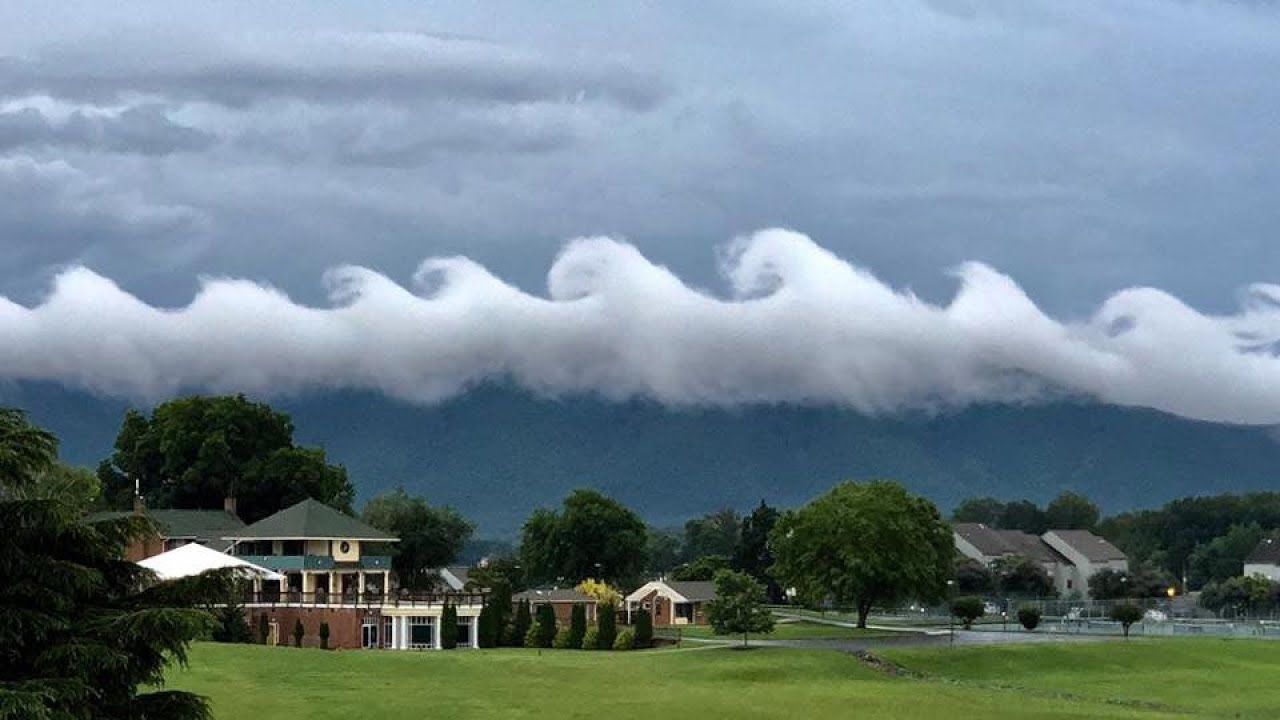Astounding Wave Clouds Amaze US Sky-Watchers In Wyoming
Astounding wave clouds amaze US sky-watchers in Wyoming. Skywatchers in the US state of Wyoming were taken aback when they saw an unusual cloud formation crashing across the horizon like ocean surf.
Author:Xander OddityReviewer:Dr. Felix ChaosphereDec 12, 202290 Shares1.8K Views

Astounding wave clouds amaze US sky-watchers in Wyoming. Skywatchers in the US state of Wyoming were taken aback when they saw an unusual cloud formation crashing across the horizon like ocean surf.
"This was special and I immediately knew I needed to capture it,"said Rachel Gordon, a local.
Rare Clouds In The Sky In Wyoming
Astounding wave clouds amaze US sky-watchers in Wyoming. The billowy phenomenon was observed on Tuesday (Dec 6) from Sheridan above the crest of the Bighorn Mountains.
Kelvin-Helmholtz instability occurs when a faster stream of air moves above rising air below. It is also referred to as "flutter clouds."
Ms. Gordon, who said she snapped the photos from her parents' back door before sharing them on the Facebook page, said:
“„It was an awe-inspiring moment. I'm just glad others can enjoy the experience now, too.- Rachel Gordon
According to Matt Taylor of BBCWeather, the images are one of the most spectacular and dramatic examples of Kelvin-Helmholtz clouds he has ever seen.
“„Part of the beauty of Kelvin-Helmholtz clouds is that they really show up the fluidity of the atmosphere. How, like waves in the ocean, the atmosphere moves and responds to the environment around it. The air is effectively rising up and tumbling over on itself.- Matt Taylor
The cloud formation is named after physicists Lord Kelvin and Hermann von Helmholtz, who investigated the physics behind it. They are also known as "fluctus clouds" and are thought to have inspired Van Gogh's masterpiece Starry Night.
Kelvin-Helmholtz AKA Wave Clouds
Kelvin-Helmholtz clouds are one of the most interesting and unusual kinds of clouds. They look like rolling ocean waves that are evenly spaced. This happens due to Kelvin-Helmholtz instability.
Kelvin-Helmholtz instability is a sporadic but ubiquitous occurrence in the atmosphere. Because it is normally undetectable, it can be as harmful as clear air turbulence.
When the humidity is such that rising air in a vortex leads to condensation as a cloud and falling air leads to evaporation, it can be detected by radar or spotted by chance as billow clouds.
They happen when two layers of air in the atmosphere move at different speeds (a phenomenon known as shear). When the upper layer of air moves faster than the lower layer of air, it can scoop the top of an existing cloud layer into wave-like rolling formations.
Kelvin Helmholtz's instability is a scientific phenomenon that is not limited to clouds. It can happen anywhere there is a velocity difference between two fluids at the point of contact. Wind blowing over water is the most obvious example of how fast-moving air can cause waves on slower-moving water.

VIDEO: Explaining Kelvin-Helmholtz Waves
People Also Ask
When Were Kelvin-Helmholtz Clouds Discovered?
Kelvin-Helmholtz clouds were discovered in the mid-1800s.
What Are The Requirements For Kelvin-Helmholtz Waves?
Visualizing the waves in the sky requires the presence of clouds. So it's necessary to have saturated air near the top of the colder, denser air.
What Do Kelvin-Helmholtz Clouds Look Like?
Kelvin-Helmholtz clouds have an oceanic appearance similar to crashing waves.
Conclusion
Astounding wave clouds amaze US sky-watchers in Wyoming. A cloud generates a billowing wave pattern, which is a very rare occurrence.
They arise when there is significant vertical shear between two air streams, making winds blow faster at higher elevations than at lower levels.

Xander Oddity
Author
Xander Oddity, an eccentric and intrepid news reporter, is a master of unearthing the strange and bizarre. With an insatiable curiosity for the unconventional, Xander ventures into the depths of the unknown, fearlessly pursuing stories that defy conventional explanation. Armed with a vast reservoir of knowledge and experience in the realm of conspiracies, Xander is a seasoned investigator of the extraordinary.
Throughout his illustrious career, Xander has built a reputation for delving into the shadows of secrecy and unraveling the enigmatic. With an unyielding determination and an unwavering belief in the power of the bizarre, Xander strives to shed light on the unexplained and challenge the boundaries of conventional wisdom. In his pursuit of the truth, Xander continues to inspire others to question the world around them and embrace the unexpected.

Dr. Felix Chaosphere
Reviewer
Dr. Felix Chaosphere, a renowned and eccentric psychiatrist, is a master of unraveling the complexities of the human mind. With his wild and untamed hair, he embodies the essence of a brilliant but unconventional thinker. As a sexologist, he fearlessly delves into the depths of human desire and intimacy, unearthing hidden truths and challenging societal norms.
Beyond his professional expertise, Dr. Chaosphere is also a celebrated author, renowned for his provocative and thought-provoking literary works. His written words mirror the enigmatic nature of his persona, inviting readers to explore the labyrinthine corridors of the human psyche.
With his indomitable spirit and insatiable curiosity, Dr. Chaosphere continues to push boundaries, challenging society's preconceived notions and inspiring others to embrace their own inner tumult.
Latest Articles
Popular Articles